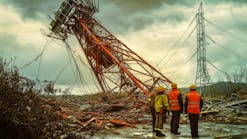Siemens has deployed its building management software (BMS), energy and power management software (EPMS) and White Space Cooling Optimization (WSCO) at Greenergy Data Centers’ new data center in Russia’s neighboring country, Estonia.
The 14,500 square-meter data center in Tallinn is considered the largest and most energy efficient in the Baltic region, running on renewable energy. It is the first out of three such facilities that will boost the region’s e-commerce and digital societies, according to the companies.
“This new complex conforms to all of the highest international security standards, and aims to operate at 25 percent higher energy efficiency than the market’s average,” said Kert Evert, Chief Development Officer, Greenergy Data Centers. “Working with Siemens we are able to have a single-vendor concept from A-Z, and together we have created the region’s most advanced and efficient data center, creating more favorable conditions for both foreign and local companies to offer their services on the Estonian or Baltic markets. Technologically speaking, we are at the absolute top of the world.”
The building management systems, energy performance and WSCO at the data center can be monitored, visualized, controlled and optimized via the Siemens Desigo CC control platform.
Combining the Desigo CC building management and Siemens’ AI-powered WSCO is intended to improve thermal optimization and increased energy efficiency at the building. The software also helps ensure thermal protection of server rooms by adjusting cooling system operations.
Sensors embedded across the center’s white spaces feed detailed temperature data into the WSCO software, which uses an advanced machine-learning model to analyse the cooling effect in different areas and optimizes cooling distribution, limiting energy usage to what is necessary. The software automatically responds to temperature fluctuations and helps minimize malfunction risk, mitigating overconsumption issues and ensure uninterrupted equipment availability.
“As demand for data center services continues to rise globally, digital tools will play a key role in mitigating the environmental impact of data, while maintaining the high levels of security, resilience and redundancy required of critical infrastructure,” said Dave Hopping, CEO, Solutions and Services, Siemens Smart Infrastructure. “Greenergy Data Centers’ new facility in Tallinn is an excellent example of how digital building technology and services can combine to create a benchmark in smart, energy-efficient data centers.”
Estonia was part of the Soviet Union from World War II through 1991, despite early and fierce resistance to the occupation. The nation declared independence from Russia and entered into the United Nations in 1991.
Estonian leaders have warned of the threat of Russian cyberattacks in the wake of its opposition to the invasion of Ukraine.





